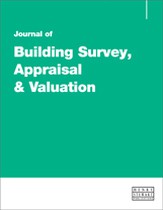Above ground damp proofing: How to improve detailing: Part 2 — Using air gap membrane systems
Abstract
Part 2 of this paper shows examples of air gap membrane systems used in above ground scenarios. The membranes are versatile, as they suit both above and below ground applications, and can even be used to overclad buildings. There has been a lack of independent research into remedial damp proofing in the UK. Bench tests on damp proofing products do not prove that they work in a real building, that they are installed correctly, or are even necessary. There is not much attention paid to external support measures by the remedial treatment industry. A leaky umbrella will have a greater chance of keeping you dry if you turn down the tap that is splashing water on it. Technical opinions in this paper are based primarily on experience gleaned from hundreds of thorough dampness investigations, together with findings from a number of the author's own, mainly self-funded, practical tests — on measuring instruments, materials and damp proofing systems. And of course interfacing with expert colleagues who are willing to share their own experiences. There is not enough time in one surveyor's life to make sense of all the mysteries of dampness investigation, but by publishing the pieces of knowledge that are acquired along the way, a final completed jigsaw will become more and more of a reality.
The full article is available to subscribers to the journal.
Citation
Burkinshaw, Ralph F. (2014, November 1). Above ground damp proofing: How to improve detailing: Part 2 — Using air gap membrane systems. In the Journal of Building Survey, Appraisal & Valuation, Volume 3, Issue 3. https://doi.org/10.69554/VHUY6792.Publications LLP
